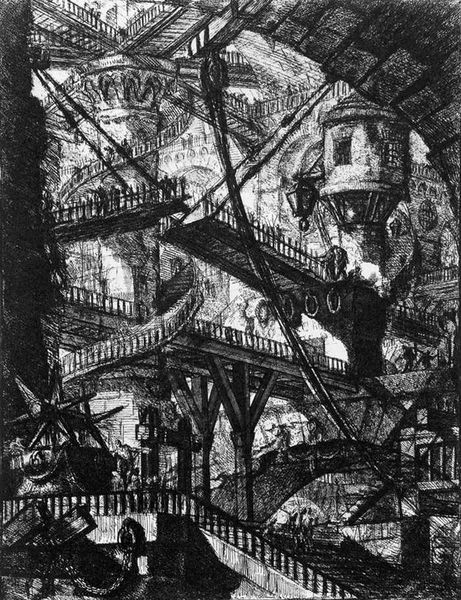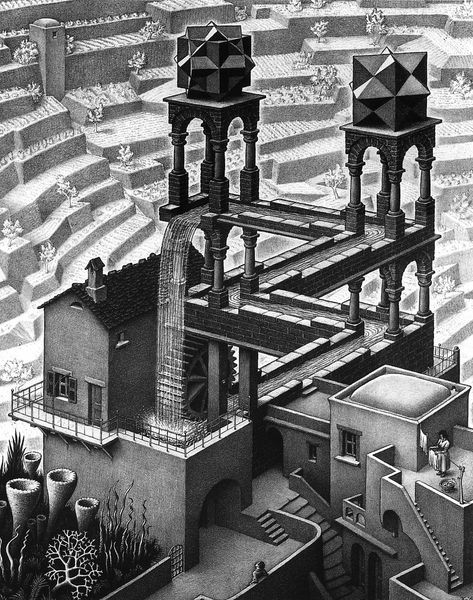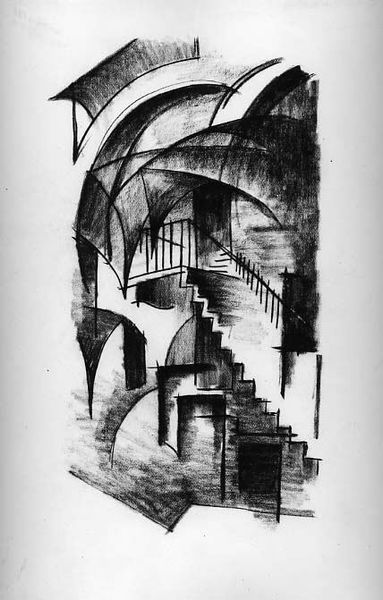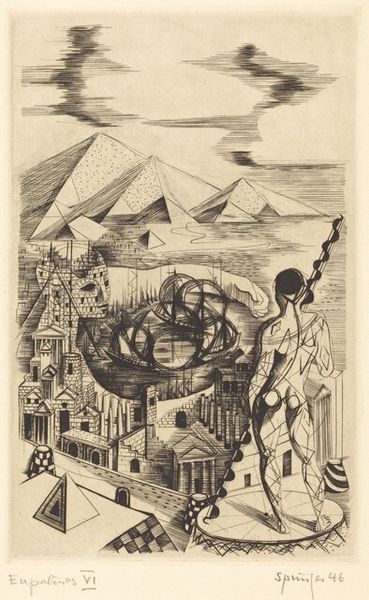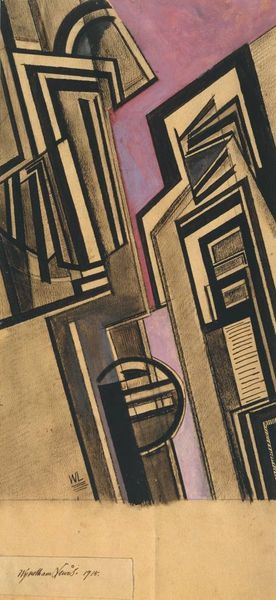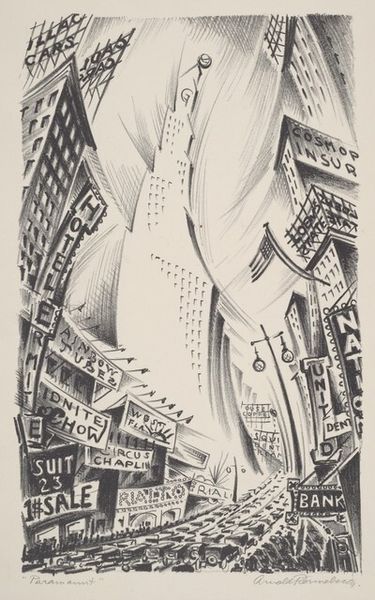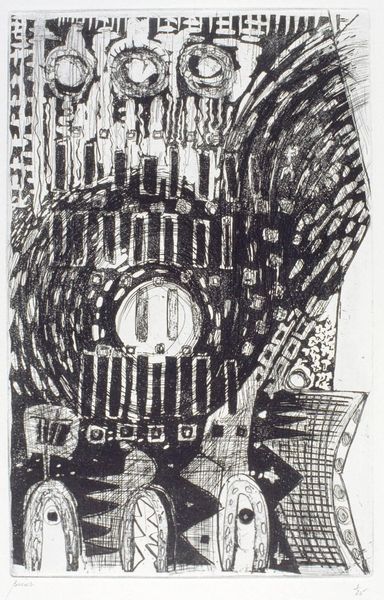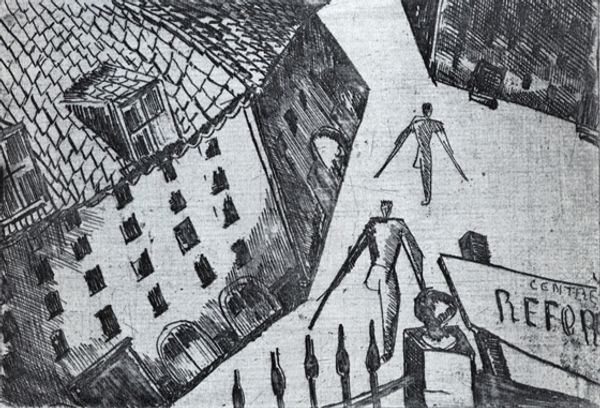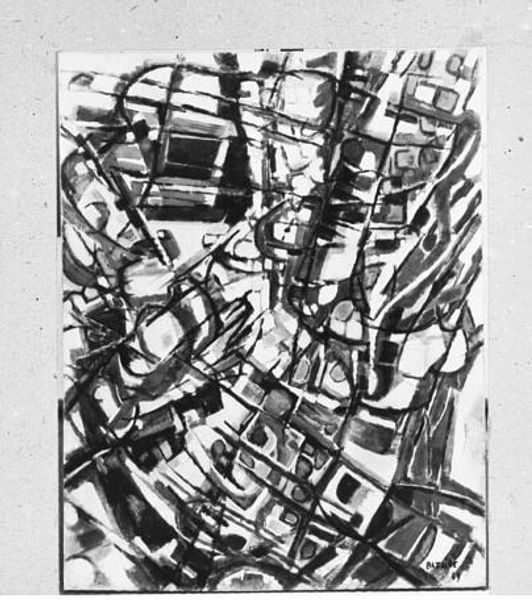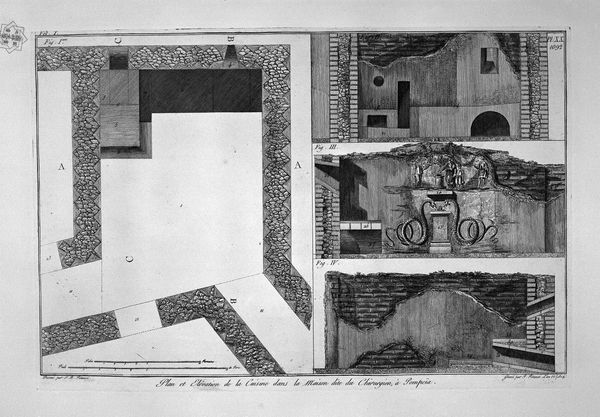
drawing, print, intaglio, engraving
#
drawing
# print
#
intaglio
#
perspective
#
engraving
#
geometric
#
cityscape
#
engraving
Copyright: M.C. Escher,Fair Use
Curator: Stepping up to M.C. Escher's 1956 print, "Print Gallery", rendered in intaglio, one immediately feels pulled into multiple perspectives, an exercise in visual paradox, where reality twists and bends into self-referential loops. Editor: It’s dizzying! A total head trip. The eye jumps around, never quite able to find a solid place to land. It makes me feel like I'm in a dream where the architecture is just... fluid. Curator: That's quite Escher's intention, I believe. Look how he plays with our perception of space; a young man views a print in a gallery which then contains, impossibly, the very gallery we are ostensibly viewing. This effect challenges the very structure of representation, commenting on the cultural institutions that shape our art appreciation. Editor: Totally! It’s a mobius strip of a gallery. Is he mocking art's self-importance, its endless loop of creation and critique? And yet, even with the architectural tricks, there's this undeniable craft—the shading, the detail of the buildings. It sucks you in, even as it messes with your mind. Curator: Indeed. It's meticulously crafted chaos. Escher wasn't formally trained in mathematics, yet mathematicians have identified profound mathematical principles embedded in his compositions. There’s a bending of space based on complex geometries that speak to mathematics. Editor: It makes sense though right? I feel like so much math gets passed off as logical, but for a mind like mine its pure creative chaos to think about. Art isn't bound by Euclidean constraints. The emotional impact is… what’s the word… unsettling but awesome? You are kind of left seeing art galleries and museums as blackholes that we’re just destined to get sucked into eventually. Curator: Exactly. Escher provokes a deeper question about the framework through which we consume and categorize art itself. By implicating us, the viewers, within the picture, he underscores that we are all participating in constructing meaning from art. Editor: So it is like, a commentary on everything around art! And here we are adding another layer to that loop. You've expanded how I interpret this labyrinth, emphasizing art as this institutional framework that has these subtle but effective impacts on us that may otherwise go unseen, but all while in this insane vortex of mind-bending artistry. Curator: A perspective, which will evolve I hope, each time this work meets a new audience.
Comments
No comments
Be the first to comment and join the conversation on the ultimate creative platform.


